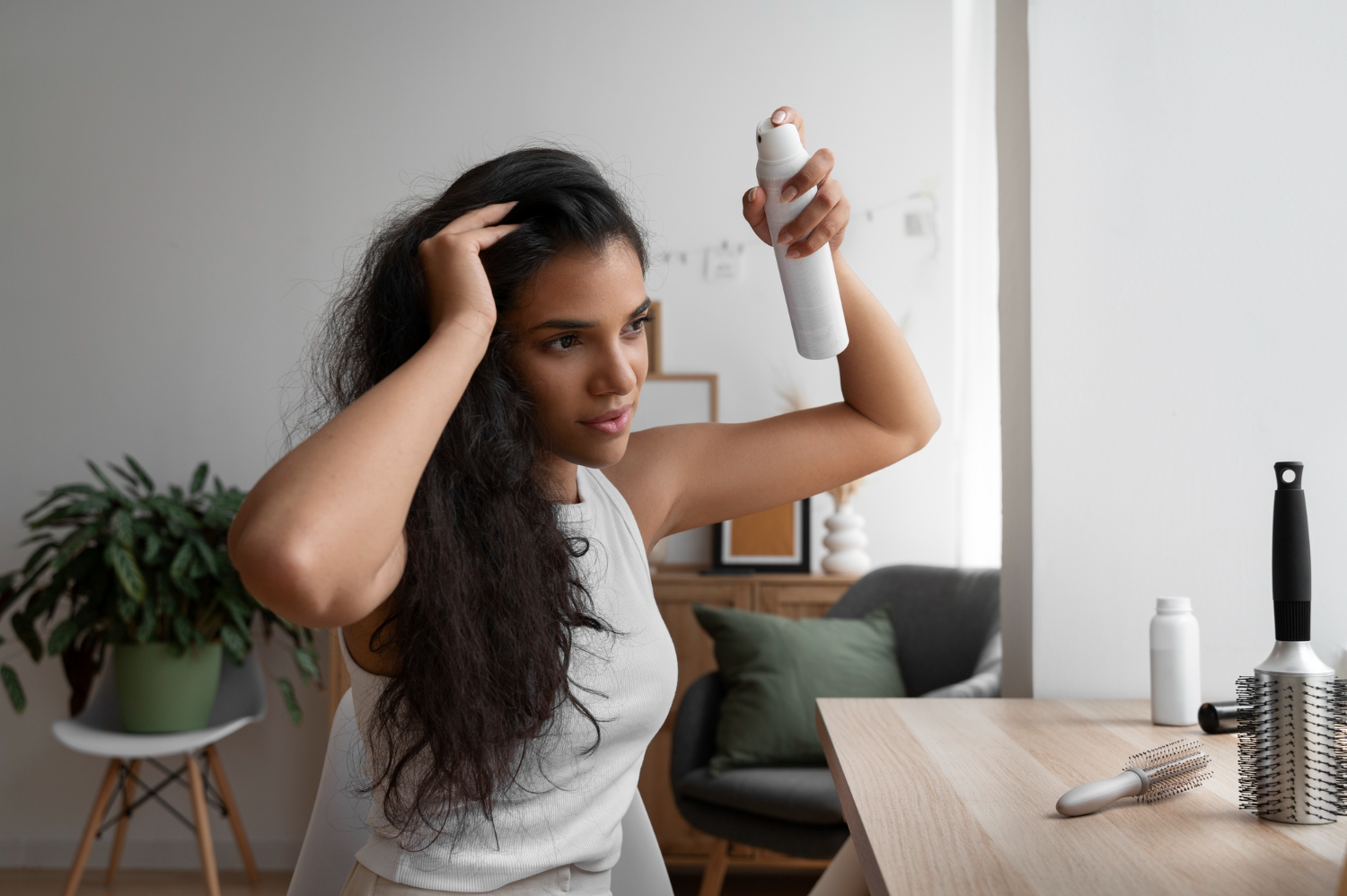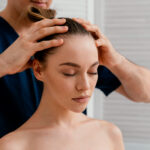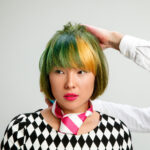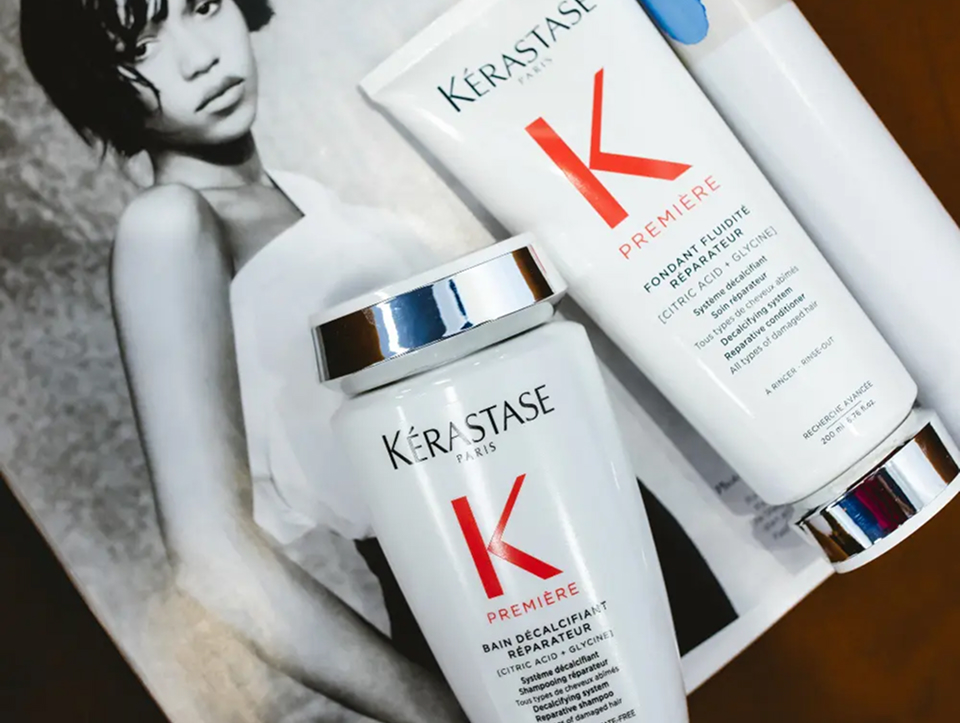Hairspray has been a staple in styling kits for decades, keeping hairstyles in place, taming flyaways, and adding volume. But if you’ve ever wondered, “Is hairspray bad for your hair?”, the answer isn’t as simple as yes or no.
While hairspray is generally safe when used correctly, certain habits and ingredients can affect your hair’s health. In this guide, we’ll break down what hairspray is, how it works, the safest ways to use it, and alternatives for healthy styling.
What Is Hairspray?
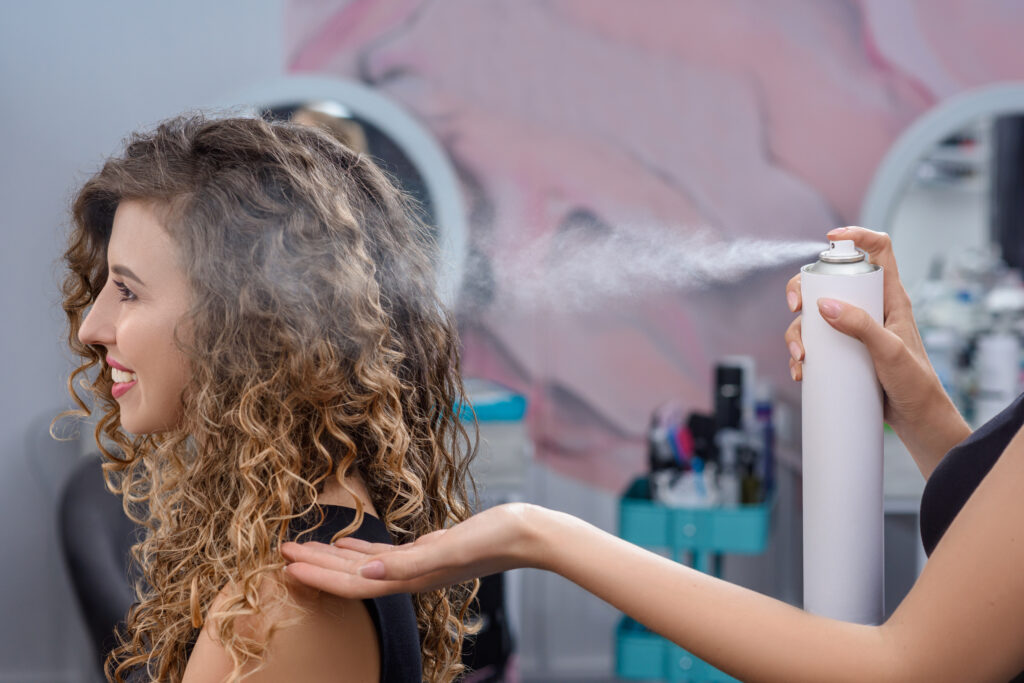
Hairspray is a cosmetic product designed to hold hair in place. It typically consists of:
- Polymers: Long-chain molecules that form a flexible film over the hair.
- Solvents: Such as water or alcohol, which evaporate after application.
- Propellants: In aerosol sprays, these help disperse the product evenly.
It was first developed in the 1940s to help maintain hairstyles throughout the day. The polymers are what give hairspray its holding power. They coat the hair strands and help them stay in place.
🧪Scientific Insight
Research indicates that hairspray resins can affect hair properties like stiffness and tackiness during drying. A study published in PubMed utilized a texture analyzer to measure mechanical parameters of hair modified by hairspray resins, highlighting the influence of polymer composition on hair texture.
Still, modern hairsprays often include ingredients designed to protect or nourish hair. For instance, some formulas now contain biotin, panthenol, or natural extracts that help minimize dryness.
Research also shows that choosing products free from harsh alcohols and sulfates can reduce hair breakage and maintain moisture levels.
How Does Hairspray Work?
Hairspray works through the action of polymers dissolved in a solvent (usually alcohol or water). When sprayed on hair, the solvent evaporates quickly, leaving a thin polymer film that binds the hair strands together.
- Polymers: These are long molecules that form a flexible coating around each strand, providing hold and shape.
- Solvent evaporation: As the alcohol or water evaporates, the polymer “locks” the hairstyle in place.
- Additives: Many sprays include conditioners or UV filters that help minimize dryness or sun damage.
This explains why hairspray can maintain your style for hours without feeling stiff if applied correctly.
Different Types of Hairspray
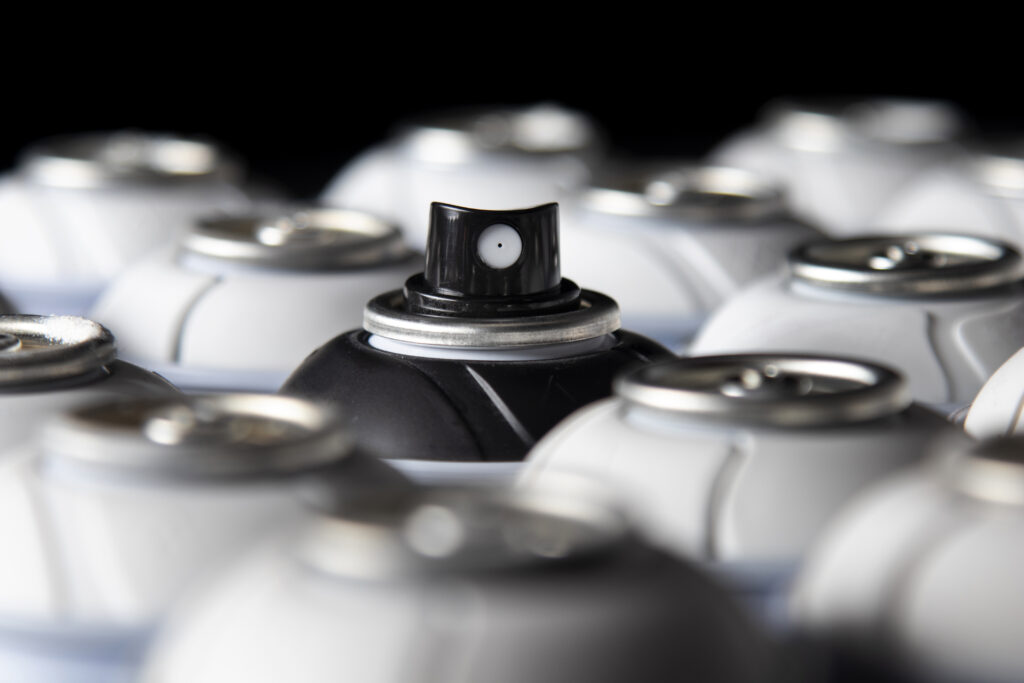
Choosing the right hairspray depends on your hair type and styling goals:
- Aerosol sprays: Fine mist for overall hold; easy for quick touch-ups.
- Non-aerosol sprays offer a stronger hold and are more eco-friendly, making them perfect for elaborate hairstyles.
- Dry or textured sprays: Add volume and lift without stiffening hair; ideal for messy or casual looks.
💡 Tip: For a gentle hold that doesn’t dry out your hair, pair your hairspray with a hydrating hair treatment.
Is Hairspray Bad For Your Hair?

The short answer: No, when used in moderation. The long answer depends on your technique, product choice, and hair care routine.
Potential Issues
- Chemical buildup: Frequent use of sprays with alcohol or synthetic polymers can dry out hair.
- Heat exposure: Applying hairspray before using flat irons or curling irons may cause extra damage.
- Scalp irritation: Spraying directly onto the scalp or using heavy formulas may lead to itching or buildup.
How to Minimize Damage

Choose safer formulas – avoid sprays with high ethanol content or harsh chemicals; look for nourishing ingredients.
Wash out hairspray daily – leaving it on overnight can dry your hair and cause tangles.
Deep conditioning – combine your styling routine with a hydrating treatment or hair mask to restore moisture.
Use heat protection products – always style first, then apply hairspray.
Benefits of Hairspray
Even with precautions, hairspray offers many advantages:
- Tames flyaways
- Adds volume when sprayed underneath layers
- Helps curls or waves hold longer
- Allows you to experiment with hairstyles
- Can disguise oily hair on days you skip washing
🎈 Explore these party holiday hair tips
6 Tips For Applying Hairspray
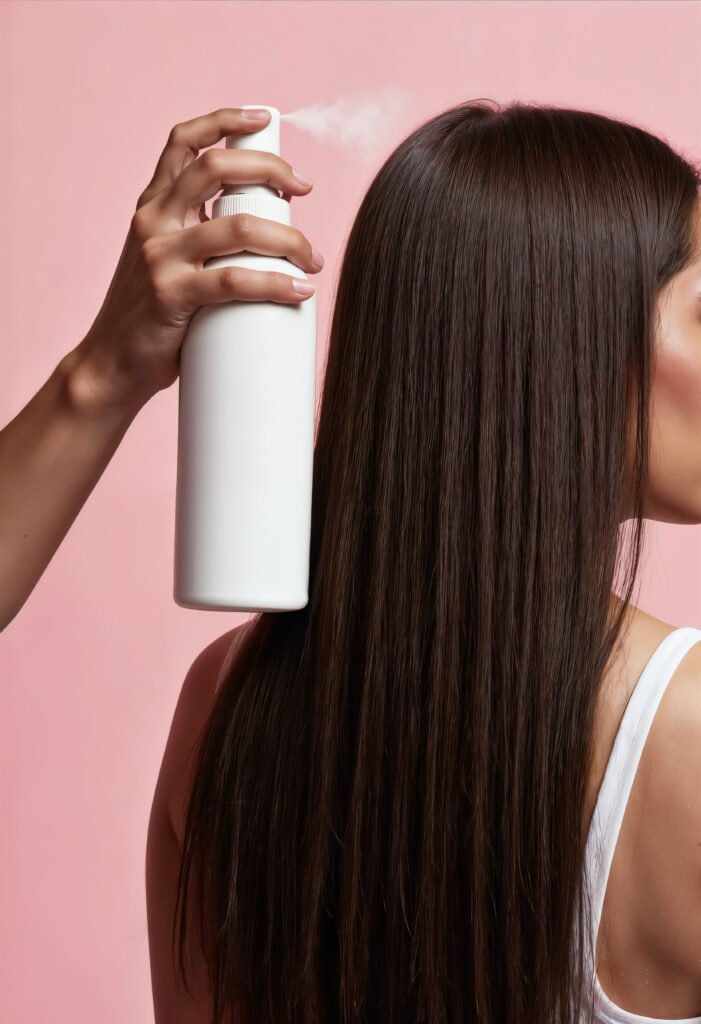
With the following tips, you can apply your hairspray without causing too much damage in the long run:
- Shake the bottle of hairspray before use, and hold it at least eight inches away from your hair.
- Avoid spraying too much. You want it to hold your hair in place without feeling like a heavy brick.
- Always spray your hairspray on dry hair, not wet hair, as damp hair makes it hard. The polymers will struggle to create a hold.
- Use your hairspray to tame flyaways using your hands after spraying.
- Before use, ensure the nozzle is not clogged, as it must form a mist spray.
- If your scalp is irritated, avoid spraying hairspray directly onto it. Also, before using a new hairspray, always test it to ensure it does not cause an allergic reaction.
Hairspray Alternatives

Mousse: Adds volume to damp hair when blow-dried.
Hair gels: Offer varying hold strengths; some contain glycerin for moisture.
Hair waxes/clays: Firm hold with natural ingredients like beeswax.
Pomades & creams: Ideal for specific textures or sleek looks.
Style Smart, Keep Hair Healthy
Hairspray isn’t bad for your hair when used correctly. Moderation, choosing safer products, and incorporating hydrating treatments will ensure your hair stays strong, shiny, and healthy.
Still unsure which products or techniques are best for you? Book a consultation with one of our stylists to get personalized advice.
For more tips on maintaining healthy hair while styling, check out our blog for guides, product recommendations, and haircare inspiration.
FAQ
Can hairspray harm your lungs?
Used correctly, no. Modern regulations limit harmful VOCs, so inhalation risks are minimal.
Can hairspray cause cancer?
When purchased from reputable brands, no. Avoid products from regions with less strict regulations, which may contain harmful chemicals.
Does using hairspray have benefits?
Yes. It maintains hairstyles, supports curls, and helps disguise oiliness. Some formulas also include protective additives.

